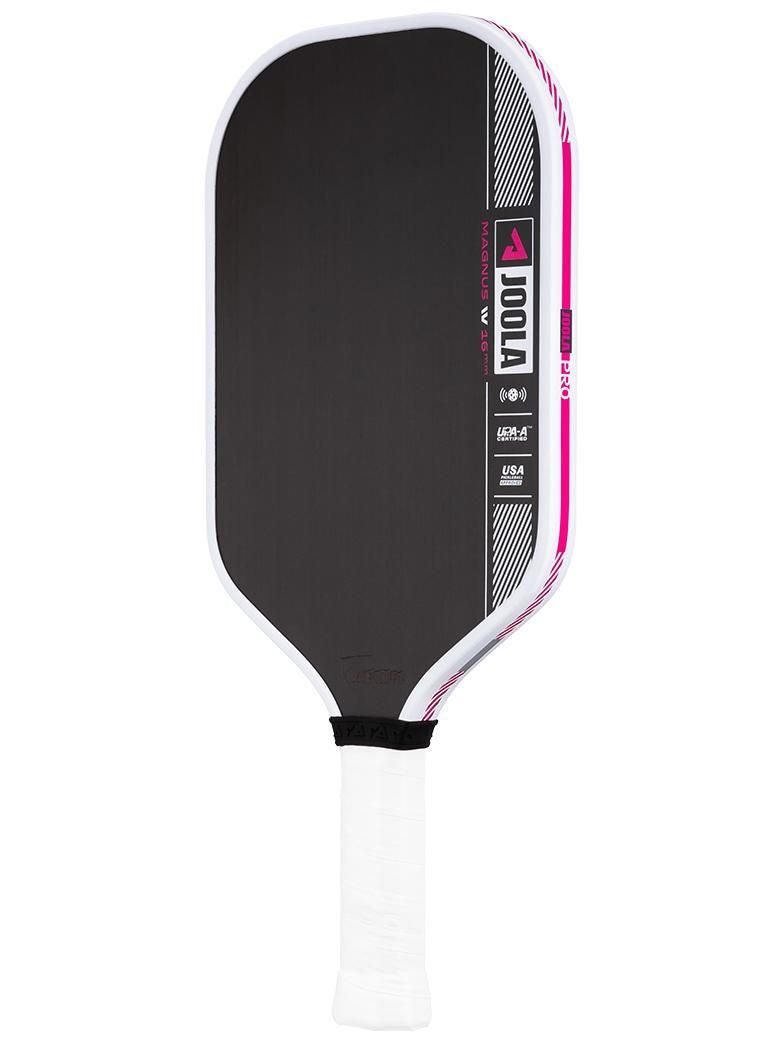Testing JOOLA Pro IV Paddle Shapes
How Swingweight and Twistweight Reflect Design Differences


With all five JOOLA Pro IV shapes now released - Perseus, Agassi, Hyperion, Magnus, and Scorpeus - we wanted to explore how each design impacts performance when everything else stays the same. These paddles share identical construction: same core, face, surface materials, TFP foam inserts, and frame. That means the key differences come down to shape, along with slight shifts in weight and balance. It’s a rare setup that allowed us to isolate those variables and see what kind of real-world effects they create. While swingweight and twistweight aren’t complete indicators of power or control - since other elements like core stiffness, surface texture, and sweetspot size also matter - they become especially useful when the rest of the paddle is a constant. So we tested the Pro IV line to uncover the measurable differences in power and control driven by shape alone.
Swingweight: A Window into Power Potential
Measured using our HEAD 4:1 machine, swingweight gives us a sense of how much effort or “load” it takes to swing the paddle. It’s not the same as static weight - instead, it reflects how the paddle’s balance and shape affect its momentum in motion. A higher swingweight typically translates to more plow-through and power potential, while a lower swingweight cuts quicker in the air, ideal for hands battles at the kitchen line.
Here’s how the five paddles ranked from highest to lowest swingweight:
-
Agassi
-
Perseus
-
Magnus
-
Hyperion
-
Scorpeus
Surprised to see the Agassi top the list even over the longer Magnus? That’s the interesting part - swingweight is not dictated by length or shape alone. It's a combination of how weight is distributed across that shape, which is what gives each paddle its own unique “feel” in motion - regardless of their shape. The Scorpeus having the lowest swingweight does not come as a surprise, as this control oriented shape should be the easiest and fastest to wield.
| Paddle | Swingweight |
| Agassi | 81.9 |
| Perseus | 81.1 |
| Magnus | 80.9 |
| Hyperion | 78.6 |
| Scorpeus | 78.5 |
Twistweight: A Glimpse into Control Stability
Next we tested twistweight, which is essentially how stable a paddle feels on mis-hits or off-center contact. Higher twistweight = more forgiveness and predictability, which tends to correlate with a paddle feeling more control-oriented.
Here’s how they ranked from highest to lowest twistweight:
-
Scorpeus
-
Magnus
-
Perseus
-
Agassi
-
Hyperion
This lines up pretty cleanly with the Scorpeus’ short, wide design - a paddle that naturally resists twisting better due to its shape and sweetspot spread. Also aligning with the lower than expected swingweight result, the Magnus having the second highest twistweight suggests the weight balance of the paddle favors more control than we would expected from the longest paddle in the lineup.
| Paddle | Twistweight |
| Scorpeus | 9.0 |
| Magnus | 8.4 |
| Perseus | 8.1 |
| Agassi | 7.9 |
| Hyperion | 7.8 |
So What Did We Learn About These Shapes?
It’s fascinating to see how these paddles sort themselves out when only shape and weight distribution are on the table:
-
Scorpeus feels the most control-focused with the lowest swingweight and highest twistweight - perfect for touch players.
-
Agassi and Perseus had surprisingly similar measurements - sitting right near the average in both categories, and perhaps part of why both are getting strong feedback in the market.
-
Magnus offers added reach and leverage but didn’t spike either measurement - landing it in a very balanced middle ground.
-
Hyperion stayed light-feeling in both swingweight and twistweight, which may suit players who prefer speed and mobility over power and stability.
The 16 mm version of each shape was measured for these findings on a HEAD 4 in 1 machine




















